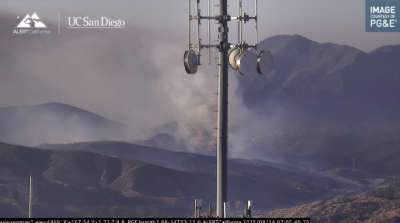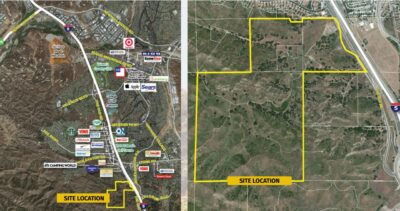Design services for the on-campus Advanced Technology Center at College of the Canyons are being delayed after governing board members requested further updates on the scope of the project before approval.
Sharlene Johnson, president of the Santa Clarita Community College District board of trustees, which oversees COC, pulled an item at Wednesday’s meeting from the consent calendar that would have awarded design services for the ATC to Kruger, Bensen & Ziemer Architects for $4.4 million in Measure E bond funds.
After discussion revolving around an impending report from the National Coalition of Advanced Technology Centers and whether all stakeholders involved in the project have been included in project discussions, the board unanimously decided against approving the contract.
“For me, I’d feel more comfortable tabling this to see that report first,” Johnson said, “so that we can make a really logical decision, especially when we are proceeding forward with $4 million.”
That report was recently delivered to David Andrus, interim president of the college, he said, and is currently being looked over by a team of college officials after an initial draft came out at the beginning of February. The plan is to present that report at a future meeting.
The ATC, listed on Wednesday’s agenda as a 75,000-square-foot, two-story structure that would “readily accommodate both current and future instructional and industry needs,” was originally meant to be built off-campus before that deal was nixed in September. The college made a deal in September with Intertex, the developer for the original plan, to pay $10 million for the Valley Center Drive property, design documents and entitlements, with the idea then to either sell that land or build another project on it that would fit the criteria of the Measure E bond measure.
College officials have been working with a commercial brokerage firm to determine whether selling that land, which cost roughly $5.5 million, would be beneficial, according to Andrus, and the decision has been made that it would make more sense to find another project to build.
The $10 million came out of the college’s general fund, but that can now be reimbursed from the Measure E fund, which has roughly $92 million left over, including outstanding commitments and $25 million in bonds that still need to be issued, according to Jason Hinkle, interim vice president of business services.
The action of reimbursing the general fund with bond money was not required to be approved by the governing board, Andrus said, as it was an allowable action that was taken when the previous board — Arnold, Johnson and Darlene Trevino are all new to the board after winning elections in November — approved the deal.
“We’ve checked with our bond counsel, and we made reference to, I believe in there, the Treasury regulation, that allows us to do that,” Hinkle said. “Once we spend general bond money on it, then it is locked in for use of a general obligation bond project, which is why we did it the other way first to explore the possible sale.”
Andrus added that it would be “procedurally inappropriate” to hold another vote on the reimbursement and would “empower the board inappropriately.”
Board member Fred Arnold raised the question of stakeholders on campus and around the Santa Clarita Valley being involved for both the on-campus ATC and the Valley Center Drive property. He and Andrus had a back-and-forth discussion about that, to which Andrus said, “your comment is a little bit of a mystery to me.”
Andrus added that the college is actually behind on its commitment to the ATC, which he referred to on Wednesday as “the future of workforce development.”
“There’s a lot of things we need around here,” Andrus said. “But what we do know is, is that this is something that is directly related to the future of the campus as it relates to (full-time equivalent student) generation and the future of education, especially as it relates to our relationship to industry, that we are responsive to. And so I have received no notice or indication from anybody on campus that they feel left out of any of these discussions.”
According to Andrus, the college is hoping to only have to spend $50 million in bond funds on the ATC, with another $8 million coming through a potential federal earmark from Rep. George Whitesides, D-Agua Dulce. The ATC is being looked at as a $75 million investment, with the remaining $15 million or so set to come from partnerships from former Rep. Mike Garcia, who is working as a consultant for the college to discuss partnerships with local industry partners, Andrus said.
Arnold was also wondering why he, Trevino and Johnson are still “in the dark” on how the Intertex deal was canceled, to which both Hinkle and Andrus responded that the only closed-session talks during discussions on the deal were due to attorney-client privilege, and everything else that was known about the deal was revealed at the September meeting.
At that meeting, college officials discussed how the original ATC plan for a 30,000-square-foot facility that was approved for roughly $22 million would not have satisfied the needs of the college. It was later described as a “very bad deal” at a facilities planning discussion in February.
“I don’t know why you would say you’re in the dark,” Andrus said. “This board’s not in the dark. The community is not in the dark. The college is not in the dark. Everything has been transparently handled as of that special meeting. There’s nothing to be in the dark about. I don’t understand that comment, because the termination of the Intertex agreement was conducted in an open session through the Brown Act. It was completely transparent, and we explained why we came to terminate that contract, in detail.”
As was previously discussed in February, the timeline for the construction of the on-campus ATC is still estimated to be more than four years.
Future bond projects
Also discussed on Wednesday were projects that are planned to be funded using the remainder of the Measure E funds.
Of the $92 million in the fund balance, Hinkle said there is up to $75 million in cash, some of that already appropriated for the construction of the ATC and some set aside for upgrades to the student union on the Valencia campus.
Andrus said the student union upgrades are likely to cost around $8 million and would include replacing flooring, repainting and cafeteria upgrades, after an initial meeting was recently held.
“Not a lot to go on yet, but we will give updates as we go through this,” Andrus said. “And I think that in my conversation with (vice president of facilities) Erin (Tague), that this is something … we’re going to move forward fairly quickly, because it’s not a heavy lift in terms of the planning and what we’re going to be able to achieve there.”
As for the Valley Center Drive property, which is located off of Golden Valley Road, the idea is to find a cheaper project that would have a higher return on investment for faculty and students, Andrus said.
“That property itself needs to be developed, and instructional deans and staff and the executive cabinet have already identified the most appropriate use for it at the lowest cost with the highest return in terms of need for the district,” Andrus said. “It’s probably an instructional space for an instructional program that I can present at a future date.”








